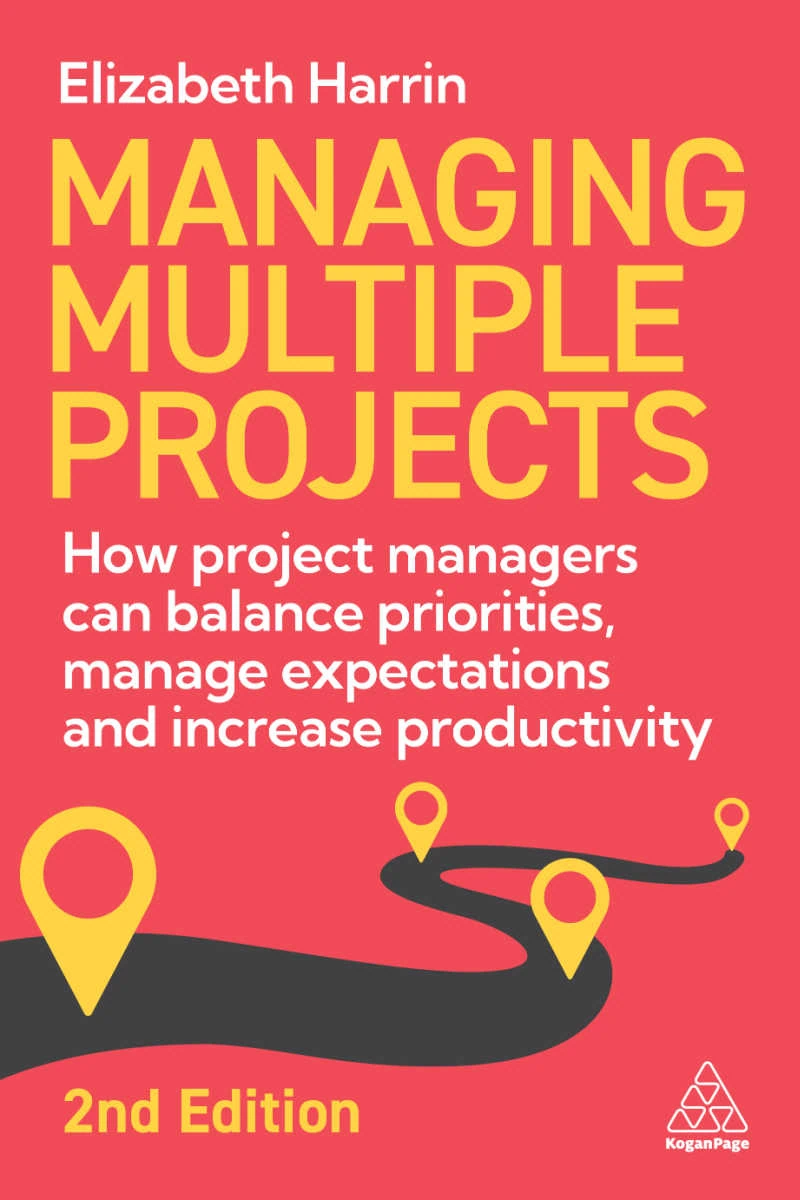How I learned to manage multiple projects and still leave the office on time
This blog is reader-supported. When you purchase something through an affiliate link on this site, I may earn some coffee money. Thanks! Learn more.
Watch my free webinar training on the 3 critical skills you need to manage multiple projects. Learn the skills you really need to juggle all your work!
“There’s another project I’m just waiting to hear about,” said my sponsor.
I silently groaned. I was already managing a couple of projects and while I probably could take on the workload of this additional small piece of work, the mental overload of juggling so many things was getting too much.
But let’s go back in time.
Case study: My story
My first proper project management job was for an insurance firm, and I was working in the IT and Business Change team as part of a project team leading on the upgrade of a website.
As far as I can recall – it was quite a while ago now – I basically had that one thing to do. It was the perfect grounding in how to do my job. I had a mentor and a supportive manager, as well as a great team around me and an amazing IT team leader called Jo whose department was building the thing.
She was so switched on that her plans were excellent and I don’t remember having any dramas about people not knowing what they were supposed to do or not hitting the dates.
Apart from one day when a key contractor didn’t show up because his house had become infested with woodworm and he’d had to evacuate his family and focus on dealing with that.
But that’s a different story.
The point is: when I started out managing projects, I had a very defined brief.
Later, I moved to the global head office and had a more operational job with a bunch of smaller projects. That again felt very manageable (in terms of the work. I was working in French for much of the day and that was tough).
I was in control of my workload, my boss supported all of us and I had latitude to take on new things as and when without too much pressure to keep adding more to my To Do list.
Get your copy
Managing Multiple Projects: How Project Managers Can Balance Priorities, Manage Expectations and Increase Productivity is a book that offers a comprehensive framework for juggling your workload and still leaving the office on time.

Again, this is how I remember it.
I also remember crying when I got off the phone from a prospective landlady because trying to find somewhere to live was much harder than I ever expected and being interviewed in a different language was stressful.
But that’s a different story.
For my new employer, back in the UK, I worked on the rollout of a new IT system. We rolled it out to about 35 locations, and that took a couple of years, from memory.
We were juggling several installations at any one time but it didn’t feel overwhelming as there was one overarching goal: get this software in everywhere.
Plus, when you’re doing the same thing over and over you get a sense of what’s working and it becomes easier. While every location is individual, there are enough commonalities for it not to feel like you’re ripping your brain away from one thing to do another each time you switch topics.
Later, as the rollout became more operationalized, I picked up some other, related projects too like software enhancements and interfacing the software with other apps – everything felt relevant and connected.
The brain ripping feeling started when I was back from maternity leave (Round 1). It was then that I had to start juggling multiple projects in a totally different way.
I was no longer leading groups of related projects. Sometimes my stakeholders were totally different groups too. I was team leader for a group of project managers so my job included:
- Line management for the project managers
- Trying to instill a sense of process and PMO while not formally being in that role
- Doing projects for various sponsors and supporting project managers doing their own projects
- Trying to make some sense of the existing application estate to do some kind of rationalization
- Liaising with suppliers for ongoing contracts that were nothing to do with my projects.
Needless to say, there was a lot in my head.
I know I’m not alone. As you get more confident at managing projects, and your role morphs into whatever the business needs you to do, you pick up odd bits and pieces like mentoring new starters or delivering training, managing BAU stuff or being the go to person for how to use the PM software.
No longer did I have a personal portfolio of connected and semantically-relevant work. Every day was a balance between doing something to advance my own To Do list, and supporting my team and colleagues with their work. What to focus on? How to choose what to do first?
The big learning for me
The big learning for me is that the textbooks don’t equip you for the juggling part of being a project manager. My own research shows that most project managers lead between 2 and 5 projects at a time.
But I bet your training course didn’t specifically mention multiple projects, or it made the assumption that if you could run one, you could run several alongside each other.
Well, that isn’t true.
I was in situations where I had one sponsor sponsoring two projects. He (sensibly) wanted to cover both projects in one meeting – except the meeting was supposed to be about one of the projects so I hadn’t prepared to talk in detail about the other one.
That was a hard lesson.
When you are leading several initiatives simultaneously, you need to apply the same skills in different ways to maximize your time. And to stop annoying stakeholders with too many requests of them.
The skills for managing multiple projects
There’s no magic wand to being able to manage multiple projects at the same time, objectives and deadlines. First, you need solid project management skills so you can do the job of a project manager while standing on your head – as we say over here.
In other words, you need the managing projects part to be second-nature. You don’t want to have to keep looking stuff up or wondering what process or form to use for the next part of your work. Be good at the basics of managing a project.
Next, I practiced the fundamental skills of being able to manage a multi-project environment:
- Managing my own time: becoming personally good at time management and working efficiently
- Managing requests from others: I doubled-down on stakeholder engagement and building good relationships so I could push back when I needed to
- Managing communication: If you ask my ex-colleagues, they’ll probably say comms was one of the things I was best at
- Managing schedules: I relied on software and detailed planning to work out when stuff needed to happen so nothing fell through the cracks
- Managing my environment: I systemized and checklist-ized as much as I could to have standard operating procedures for streamlining the work.
Learn how to manage multiple projects. Watch my free training on the 3 skills you really need to know to learn how to juggle your workload effectively and get all your projects done (yes, even the low priority ones).
Pin for later reading:

